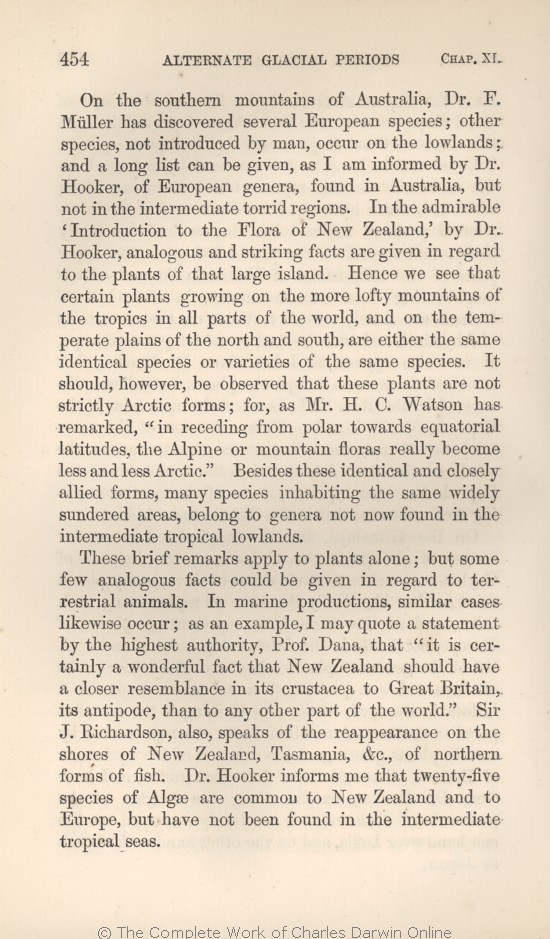On the southern mountains of Australia, Dr. F.
Müller | Müller 1866 1869 | | Müller 1859 1860 1861 1872 |
| genera, 1859 1860 1861 1869 1872 | | general, 1866 |
| that 1859 1860 1861 1869 1872 | | that, 1866 |
| certain 1869 1872 |
| throughout the world, the 1859 1860 1861 |
| throughout the world, 1866 |
| mountains 1869 1872 | | mountains, 1859 1860 1861 1866 |
| OMIT 1869 1872 |
| and on the temperate lowlands 1859 1860 1861 1866 |
| tropics in all parts of the world, and on the temperate plains of the north and south, are either 1869 1872 |
| northern and southern hemispheres, are sometimes identically 1859 1860 1861 1866 |
| same 1869 1872 | | same; 1859 1860 1861 1866 |
| identical species or varieties of the same species. 1869 |
| but they are much oftener specifically distinct, though related to each other in a most remarkable manner. 1859 1860 1861 |
| but much oftener they are specifically distinct, though plainly related to each other in a remarkable manner. 1866 |
| species or varieties of the same species. 1872 |
|
These | These 1869 1872 | | This 1859 1860 1861 1866 |
| remarks apply 1869 1872 | | abstract applies 1859 1860 1861 1866 |
| alone; 1869 1872 | | alone: 1859 1860 1861 1866 |
| but some few 1869 1872 |
| some strictly 1859 1860 1861 1866 |
| in regard to 1869 1872 |
| on the distribution of 1859 1860 1861 1866 |
| likewise occur; 1869 1872 | | occur; 1859 1860 1861 1866 |
| statement 1869 1872 | | remark 1859 1860 1861 1866 |
| "it 1859 1860 1866 1869 1872 | | "it 1861 |
| world." 1859 1860 1866 1869 1872 | | world." 1861 |
| &c., 1859 1860 1866 1869 1872 | | &c, 1861 |
|









